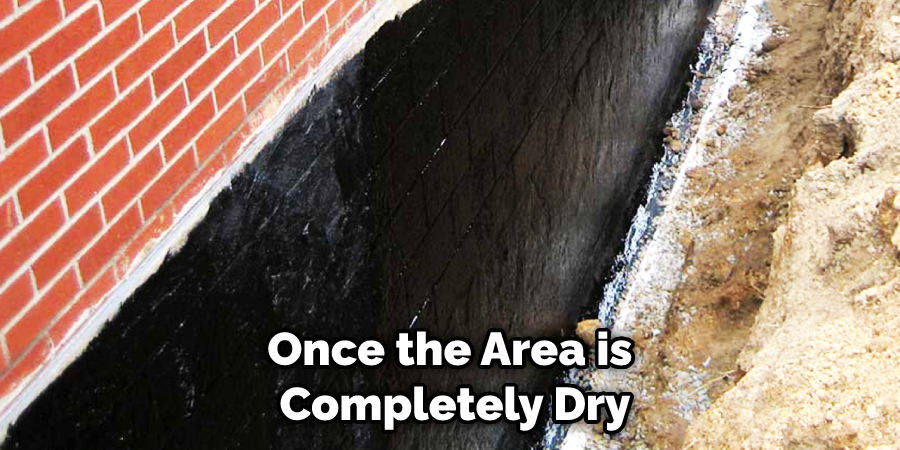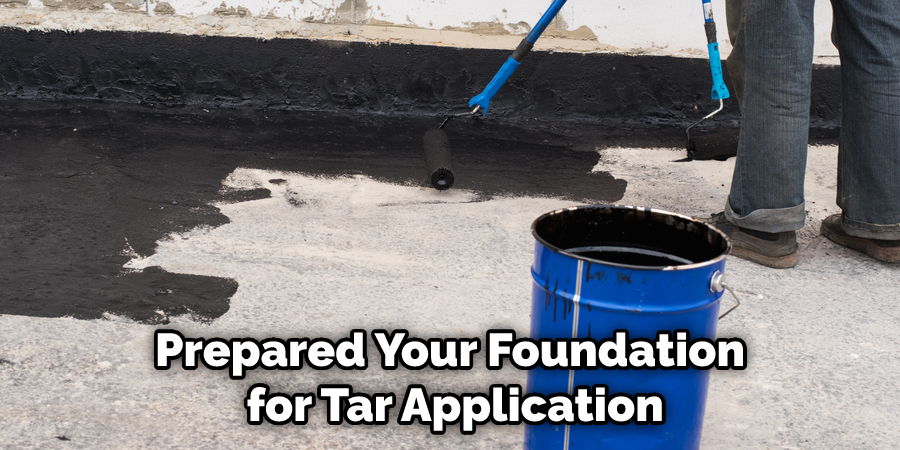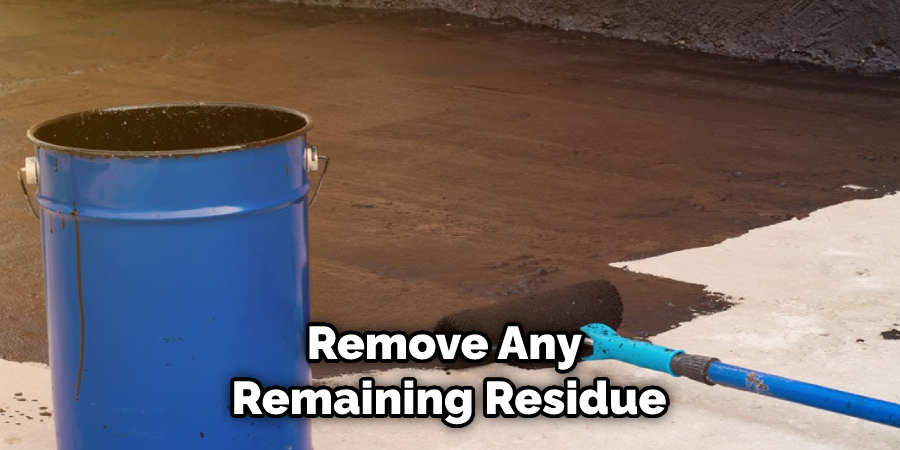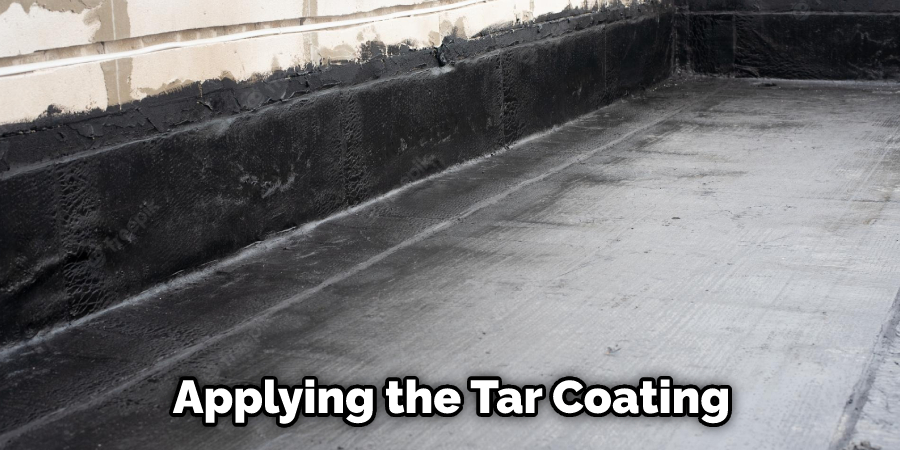Tar has many benefits when it comes to protecting your home’s foundation. It is a waterproof material that can help keep moisture from seeping into the foundation, which helps to prevent the growth of mold and mildew and other damaging agents. Tar also seals gaps and cracks in the foundation, helping to make sure that no air or water leakage can occur, which can also help to protect the structural integrity of your home. Applying tar to a foundation is an easy and affordable way to protect your home from water damage, pest infestations, and other issues that could cause long-term damage.

Applying tar to a foundation can help protect the structure against water damage and other environmental elements. Tar is an effective waterproofing material, forming a strong seal that keeps moisture out. It also increases the longevity of a foundation, as it can prevent wood rot and the weakening of the masonry walls. Applying tar properly ensures maximum protection for your foundation. In this blog post, You will learn how to Apply Tar to a Foundation in detail.
Materials You Will Need
- Tar
- Shovel
- Trowel or taping knife
- Roller or brush
- Masking tape (optional)
- Drop cloths for protection of the area below the foundation (optional)
- Stiff-bristle brush
- A clear sealer, such as an acrylic urethane sealer
- Primer to help the tar adhere
- A solvent such as mineral spirits or paint thinner (optional)
Step-by-Step Processes for How to Apply Tar to a Foundation
Step 1: Inspect the Area
Before you can tar a foundation, you need to inspect the area and ensure that it is free of debris and dirt. Next, prepare the tar for application by pouring it out into an appropriate container for your project. Make sure to wear gloves when handling the tar, as it can be very hot.
Step 2: Spread the Tar Evenly
Once you have poured out the necessary tar, spread it evenly over the area. Start from one end and work your way across, ensuring each section is coated in a thin but uniform layer. Pay attention to cracks and crevices around corners, as these will need extra attention.
Step 3: Use a Brush to Remove Excess Tar
After you have applied the tar, use a brush to remove any excess tar that may be present. This will help ensure that the foundation is properly sealed and protected from water damage or other weather-related issues.
Step 4: Allow the Tar to Dry

Once you have finished applying and removing the excess tar, it is important to give the foundation time to dry. Depending on the climate, this could take anywhere from a few hours up to a day or two. Once the area is completely dry, it should be safe to walk on and use again.
By following these steps, you should be able to apply tar to a foundation properly and protect it from water damage. Proper and thorough preparation is key when applying any kind of sealant or coating to a surface, so make sure to take your time and do the job right.
Safety Tips for How to Apply Tar to a Foundation
- Wear appropriate safety gear during the application process, including gloves, face masks, and protective eyewear.
- Make sure to work in a well-ventilated area away from open flames and heat sources.
- Use caution when handling tar materials as they can be flammable and toxic to inhale or come into contact with.
- Before applying tar to a foundation, remove any loose debris and vegetation from the surface of the foundation.
- Ensure that all cracks and gaps in the foundation are filled properly before beginning the application process.
- After finishing your work, allow sufficient time for proper drying before using your completed project.
Following these safety tips can help ensure that the application process of tar to your foundation is successful and safe. Be sure to use caution when using tar; it is a powerful material that should be handled with care and respect. Taking the necessary precautions will ensure a smooth and successful project every time.
How Much Tar Should You Use on the Foundation?

Once you’ve prepared your foundation for tar application, you must decide how much tar to use. How much tar depends on the size of the area and the type of foundation material you are covering. Generally speaking, a thin layer is best for most applications. Too much can cause the tar to become brittle or crack in extreme weather conditions.
When applying tar to a foundation, use a narrow trowel and apply it in thin layers. Use enough to cover the area completely but not so much that it’s too thick. Take care to smooth out any bumps or air pockets as you go. Once dry, you can add additional layers if necessary. As with any application, take your time and be sure to inspect the entire area once done.
How Long Should You Wait for the Tar to Dry Before Applying a Second Coat?
Applying a second coat of tar to a foundation is important to ensure that it is properly sealed. To ensure the best results, you should wait for the initial layer of tar to dry fully before applying any additional coats. How long you should wait will vary depending on your area’s temperature and humidity levels and the type of tar you are using. Generally, it is best to wait at least 24 hours for the initial layer of tar to dry before applying a second coat. Depending on your area’s temperature and humidity levels, it may take longer than 24 hours for the first layer of tar to dry fully.
You can check if the tar is ready by lightly pressing a finger into the surface.
It is ready for a second coat if it does not leave an impression or stick to your finger. It’s important to be patient when waiting for the tar to dry, as rushing this process can lead to faulty sealing that may need to be repaired in the future. Additionally, if you are using multiple layers of tar as part of the sealing process, make sure to wait at least 24 hours between each layer. This will ensure that the entire foundation is properly sealed with strong and durable material.
How Do You Clean Up Any Excess Tar From the Foundation Surface?
- After applying tar to the foundation, make sure to wait for it to dry completely before proceeding with the cleanup.
- Once the tar is fully dried, use a putty knife or other tool to scrape away any excess tar from the foundation surface gently.
- Make sure not to press too hard on the surface, as this may cause damage to the foundation.
- Use a wire brush or other abrasive tool to remove any tough bits of tar that are not easily scraped away with a putty knife.
- Wipe down the entire foundation surface with a damp cloth or sponge to remove any remaining residue from the tar application process.
- Allow the foundation surface to dry completely before beginning any additional work on it.
- Repeat these steps until all of the excess tar is removed from the foundation surface.
- Once you are satisfied with the cleanliness of the foundation, you can proceed with other projects and repairs as needed.
Following these steps ensures that your foundation is free of any dangerous and unsightly tar residue. This will help to maintain the structural integrity of your home, as well as improve its overall appearance.

How Often Should You Reapply Tar to Your Foundation?
Once you have applied tar to your foundation, you should re-apply it every three to five years as part of regular maintenance. This will help protect your structure from water damage and other potential problems. Here are some tips for reapplying tar:
- Inspect for signs of wear and tear or damage. Look for cracks, discoloration, or peeling. If you notice any of these signs, it’s time to re-apply tar.
- Clean the surface first with a pressure washer or scrub brush and then rinse off with a garden hose. Make sure that all dirt and debris are removed before reapplying tar.
- Apply a primer to the foundation. This will help ensure that the tar sticks and is properly sealed.
- Choose a good quality, flexible asphalt-based trowelable or brushable blacktop mastic. Apply it with a long-handled roller or brush in a thin, even layer over the entire surface of your foundation. Allow 24 hours for drying.
- Finally, apply a sealant to the entire surface of the foundation and allow it to dry before using your structure or home.
Following these steps and re-applying tar to your foundation regularly can help keep your structure safe from water damage and other potential problems. If you have any questions about how to apply tar to your foundation, be sure to consult with a professional for assistance.
Are There Any Environmental Considerations to consider when applying tar to a Foundation?
Yes, there are environmental considerations to keep in mind when applying tar to a foundation. Here are some steps you can take to ensure that the process is as safe and eco-friendly as possible:
- Make sure you use an asphalt-based product for your tar application, such as a roofing felt or waterproof membrane. Avoid products that contain coal tar, which can be harmful to the environment.
- Dispose of any excess tar properly and according to local regulations. Tar is hazardous waste, so check with your local municipality or landfill for proper disposal instructions.
- Wear protective gear while applying the tar coating, including gloves, goggles, and a respirator.
- Use a low-VOC solvent to clean up any spills or messes that occur during the process.
- Take all necessary safety precautions when applying tar near open flame or other potential sources of heat and fire.
Following these steps can help ensure that your tar application is safe for people and the environment.

Conclusion
In conclusion, applying tar to a foundation is an effective way of waterproofing the structure. It helps protect the building from rain, snow, and other elements while preventing cracks and water damage. Applying tar can be used either as a trowel or roller, followed by smoothing out any ridges or bumps with a brush. When mixing up the tar, be sure to stir thoroughly and use the correct amount of water.
It’s important to remember that tar needs a specific temperature range to adhere to the surface properly, so take precautions when applying it in cold or hot weather. With proper application and regular inspections, you can ensure your foundation is safe from water damage for years to come. I hope this article has been beneficial for learning how to apply tar to a foundation. Make Sure the precautionary measures are followed chronologically.
